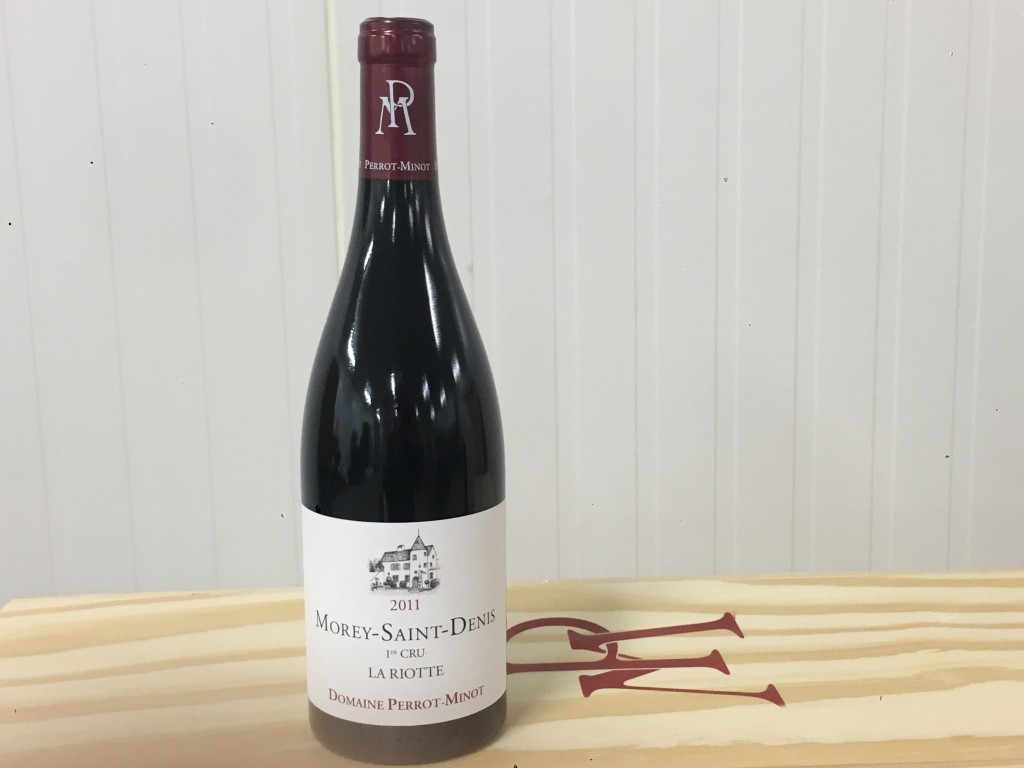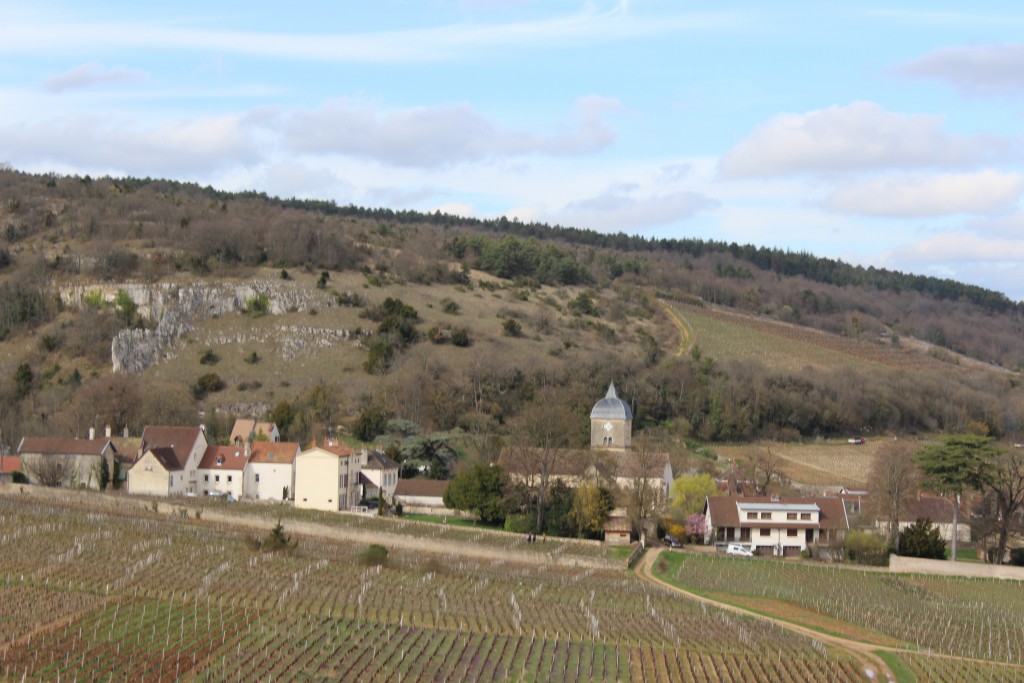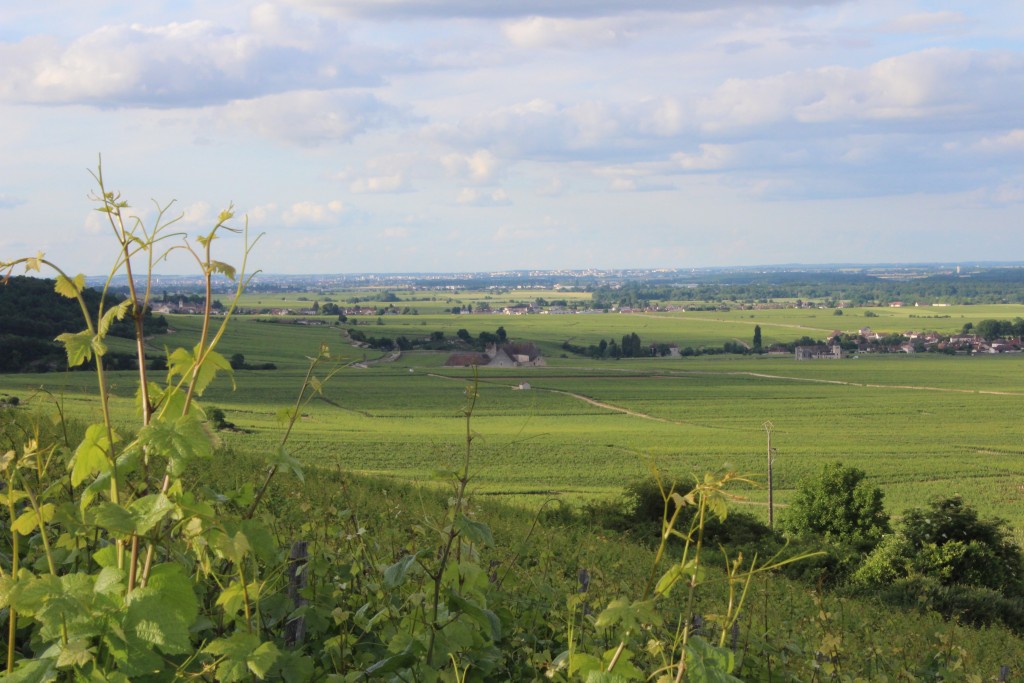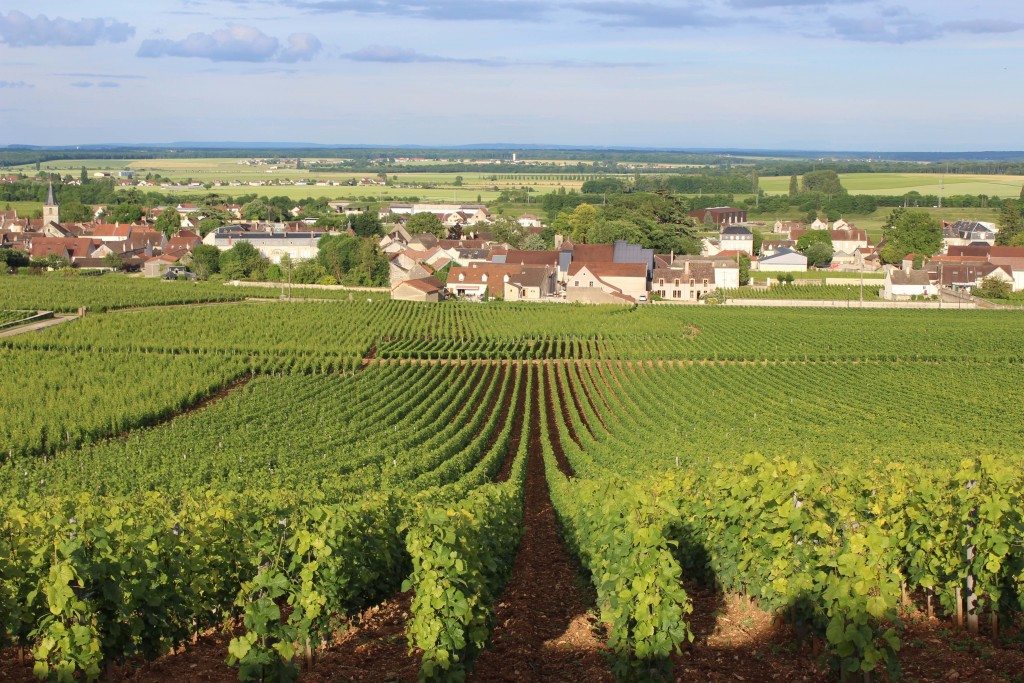2011 Red Burgundy

‘A misunderstood vintage?’ was the title of a tasting of red 2011 Burgundy held at the end of November 2017. Jason Haynes assembled a fine selection of 2011 – the full list is below – from a number of sources – half from his own stocks at the Stannary Street Wine Co with the balance from Four Walls in West Sussex, Justerini & Brooks and Howard Ripley.
I first tasted the 2011 vintage from barrel at the individual domaines during my Burgundy visit in October 2012 and the wines in this six year on tasting were, with a few exceptions, from domaines I had visited.
Back in 2012 I found the style to be quite light bodied with the wines finding a ‘lighter’ balance between smooth, soft tannins, modest but fresh enough acidity and modest alcohol. The aromatic and phenolic ripeness was more advanced than the sugar. The season started and ended early, with a poor summer in-between and the style did not display the richness and heaviness of an early vintage, – on the contrary it has a certain charm. It perhaps most resembled the 2007s, but with more stuffing and a little more acidity and tannin.
For this retrospective tasting, I did my best to taste the wines blind. They were not presented as such so it was a case of looking away from the label as I poured… I did my best.
Tasting notes
Village Wine
There were not many shown, but the three Vosne-Romanée stood out. The most instantly appealing was Arnoux-Lachaux, Les Hautes Maizières for its sweet black fruit, rounded and generous palate and ripe tannins. While this was fruit driven, Mugneret Gibourg’s was elegant and light and Sylvian Cathiard’s was the most sophisticated and structured with fine tannins.
Côte de Beaune, 1er cru
Well I do recall that Pommard and Volnay did rather well in 2011. So I was not surprised to find Domaine d’Angerville’s Volnay, Champans was deliciously rounded, open, aromatically expressive and supple (18.25). Comte Lafon’s Santenots-du-Milieu was softly and lightly sumptuous and very inviting. (18.5) Domaine de Montille produced a rippling, elegant Pezerolles with a soft acidity and silky tannins (18.6), while Domaine de Courcel produced a firm Clos des Epenots with more assertive tannin, grip and no lack of energy. A wine with good structure and potential (18.5). Comte Armand’s Clos des Epeneaux was not showing so well as Courcel’s and was rather awkward. There were two premier cru, Rugiens – Domaine de Montille’s tasted a bit herbaceous, with some green notes (17.85.) and Domaine de Courcel’s seemed a bit over ripe aromatically with black prune fruit and some pretty hearty tannins with lowish acidity – just fresh enough. Winemaker Yves Confuron always picks late and very ripe… and uses 100% whole bunch for a long cuvaison. The wines generally age well, so while it is not tasting well now, I would wait and see.
So this initial bunch from the Côte de Beaune demonstrated a divergence of style which continues into the Côte de Nuits.
On one hand we have the ripeness of an early vintage – ripe aromas and tannins – quite contrary as these are more advanced than the weight of the wine would suggest. The potential alcohol at harvest was not high at around 12.5% or so, and it was important only to tweak the sugar for the delicate balance would be easily upset. This vintage finds its balance at a lighter level of alcohol, acidity and tannin.
On the other hand there are certainly some green aromas and more herbal flavours. When tasting in October 2012 there were murmurings about the presence of ladybirds in 2011. These critters contributed to the marked green character of the 2004, but by 2011 there was greater awareness of the risks and more widespread use of a vibrating tables. They can be shaken from the bunches. So what else might account for this greenness? There was a quite a difference in picking dates with some starting harvest in August… and others a good three weeks later. Many I spoke to when tasting these wines in barrel commented that they saw no point in waiting as the vines had reached the end of their physiological cycle. The fruit would gain nothing in sugar, but risked falling acidity. It’s of little value comparing picking date as the right date for any vineyard depends on a number of factors including the volume on the vine. However it is worth commenting on the fact that while many had lovely ripe aromatics and tannins, others were rather green. A year to be cautious with too much whole bunch.
Côte de Nuits, 1er cru

Chambolle-Musigny, 1er cru
Next up were the Chambolle, 1er cru and I struggled a bit here and was not surprised when I looked after to see I was tasting Chambolle. I recall at the time they can feel a bit light and soupy or a bit thin and insipid. The best examples of the vintage need a good backbone of minerality to provide the core structure. Domaine Faiveley, Les Fuèes had a mineral core (18.). The cool position of Taupenot Merme’s Combe d’Orveaux paid off too producing quite a tart wine with more edgy tannin, but ripe enough with good energy and needing some more time in bottle. (18.15)
Morey-Saint Denis, 1er Cru
Well three were put up for this tasting and I really liked two of them. Domaine Lignier-Michelot, Faconnières was smooth and seductive with lots of fruit, ripe aromatics and tannins (18.25). In contrast Perrot Minot’s La Riotte was elegant mineral and light with an appetising sappiness and red fruit (18.25). Both had charm and Stephane Magnien’s was not so very far behind. I recall at the time that MSD was not as spicy as it can be, but the wines were very pleasant and had some elegance.
Nuits-St George, 1er Cru
Now I gave NSG got a star rating for overall good quality when I tasted in 2012. The tannins were softer in 2011 with even the more structured premier cru on the south side showing a more accessible structure. This was evident in Henri Gouges, NSG Vaucrains which was ripe with black cherry fruit, smooth, chunky tannins and modest acidity. However I slightly preferred Gouges’s Pruliers which was a bit lighter and had more refined tannins. However Gouges’s Les Saint George stole the show – not a wine to be trifled with – fuller and richer, it also had more acidity and tension…and more tannin. This needs some ageing.
Moving to the north side of the village my favourite two wines from NSG as a whole were the two Chaignots. I’m a bit of a sucker for Chaignots and Domaine Chevillon, Chaignots was a delight; elegant, silky and well balanced, while Mugneret-Gibourg, Chaignots was pure, light, elegant and energetic with fine tannins.
Staying in the vicinity Domaine Grivot, Boudots (ripe, smooth) and Hudelot-Noellat’s Boudots (full, generous, slightly burly and soft) didn’t appeal quite as much, but did fall in line with the general impression of NSG showing its smoother and more accessible face, even for the softer north side.
Vosne-Romanée, 1er cru
Well after a good innings with the village wines in Vosne Romanee, Domaine Forey, Petit Monts was too thin and too green and Domaine Clos Frantin, Malconsorts was not a good sample, however Arnoux Lachaux has produced an excellent Suchots – (18.75) quite flashy for the vintage, but very good as were the Beaumonts – Confuron Gindre’s was juicy with silky tannins (18.15), topped by Domain Grivot, Beaux Monts which which also had a juicy character, together with supple tannins a slightly fuller body and good length (18.75).
Gevrey-Chambertin, 1er cru
This village also got a star rating for its elegant personality in 2011. Things started very well with Taupenot-Merme, Bel Air. High toned and elegant with a paired down mineral frame. (Sadly Denis Bachelet, Corbeaux was not a good bottle – musty.) Joseph Roty, Fontenay was delicate and silky with pure fruit. These were the pick of the bunch for me. I found Jean-Marie Fourrier’s Cherbaudes very ripe aromatically and in contrast Bruno Clair, Clos Saint Jacques was a little on the green side for my liking.

And so to the Grand Cru
As a general comment most of the Grand Cru we tasted did not show a sufficiently significant step up from the good premier crus. Clos de Vougeots from Domaine Francois Lamarche and Domaine de La Vougeraie were decent Grand Cru, but not exciting. Lamarche, Echezeaux was somewhat more enticing. I found Virgile Michelot’s Clos Saint Denis elegant, pure and restrained..looking good if just a tad herbal. Needs time, but shows promise. While the Bonnes Mares from Georges Lignier was full and rich and very ripe aromatically with soft tannins. Very good.
The use of 100% whole bunch seemed quite marked given 6 years of maturation in Domaine Confuron Cotetidot’s Charmes-Chambertin, however this domaine’s wines take time to come around. Not approachable for now. While in contrast Taupenot-Merme’s Mazoyeres-Chambertin was structured, but very accessible (19.25). A very well mannered and accommodating wine. Bruno Clair’s Chambertin, Clos de Bèze seemed much riper.
I preferred the 2011s when I tasted them back in 2012. For the moment the Volnay and Pommard are the most easily likeable in this small sample. The combination of ripe tannin and lowish acidity should make 2011 quite a forward vintage and with six years the majority of the premier cru are approachable, if given some time to breath. However I question if it is the best time for them. Many show ripeness of fruit and softness of tannins, but not much more. I am missing the charm and balance and textural refinement I recall. I would hazard a guess the 2011s are in an awkward, in between stage. While not young, they have not gained the advantages and complexities of maturity. I think they have more to give. I would leave them be for a couple of years and try again…
Is this vintage misunderstood? In response to the question posed by this tasting, I would say, if you did not like this vintage to start with, this is not the moment to become re-acquainted. If you are prepared to wait a while, you may be pleasantly surprised, but expectations should not be too high.
Favourite wines
Côte de Nuits
Domaine Chevillon, Chaignots/Domaine Mugneret-Gibourg Chaignots
Domaine Taupenot-Merme, Gevrey-Chamberin, Bel Air
Domaine Jean Grivot, Vosne-Romanee, Beaux Monts
Domaine Perrot Minot, Morey-Saint-Denis, la Riotte
Côte de Beaune
Domaine Comte de Lafon, Santentots-de-Milieu
Domaine Courcel, Clos des Epeneaux
Full list of wine tasted
VILLAGES CÔTE DE BEAUNE
Chassagne-Montrachet Rouge, Domaine Fontaine-Gagnard
VILLAGES CÔTE DE NUITS
Côte de Nuits Villages Rue des Foins, Domaine Didier Fornerol
Chambolle-Musigny, Domaine Ghislaine Barthod
Vosne-Romanée Les Hautes Maizières, Domaine Arnoux-Lachaux
Vosne-Romanée, Domaine Mugneret-Gibourg
Vosne-Romanée, Domaine Sylvain Cathiard
Gevrey-Chambertin Vieilles Vignes, Domaine Geantet-Pansiot
1ER CRU CÔTE DE BEAUNE
Aloxe-Corton 1er Cru Les Valozières, Maison Camille Giroud
Savigny-lès-Beaune 1er Cru Les Talmettes, Domaine Dublère
Savigny-lès-Beaune 1er Cru Serpentiers, Domaine Lebreuil
Beaune 1er Cru Perrières, Domaine Hubert de Montille
Volnay 1er Cru Caillerets, Domaine Bernard Moreau
Volnay 1er Cru Clos des Chênes, Domaine Jean-Marc et Thomas Bouley
Volnay 1er Cru Champans, Domaine Marquis d’Angerville
Volnay 1er Cru Santenots-du-Milieu, Domaine des Comtes Lafon
Pommard 1er Cru Les Pézerolles, Domaine de Montille
Pommard 1er Cru Clos des Epenots, Domaine de Courcel
Pommard 1er cru Clos des Epeneaux, Domaine Comte Armand
Pommard 1er Cru Les Rugiens, Domaine de Montille
Pommard 1er Cru Les Rugiens, Domaine de Courcel
1ER CRU CÔTE DE NUITS
Chambolle-Musigny 1er Cru Les Gruenchers, Domaine Thibault Liger-Belair
Chambolle-Musigny 1er Cru Charmes, Domaine Hudelot-Noëllat
Chambolle-Musigny 1er Cru Les Fuées, Domaine Faiveley
Chambolle-Musigny 1er Cru Combe d’Orveaux, Domaine Taupenot-Merme,
Chambolle 1er Cru Les Amoureuses, Maison Albert Bichot
Morey-St-Denis 1er Cru Faconnières, Domaine Stéphane Magnien
Morey-St-Denis 1er Cru Les Faconnières, Domaine Lignier-Michelot
Morey-St-Denis 1er Cru La Riotte, Domaine Perrot Minot
Nuits-St-Georges 1er Cru Clos-des-Forêts-St-Georges, Domaine de l’Arlot
Nuits-St-Georges 1er Cru Clos de la Maréchale, Domaine J-F Mugnier
Nuits-St-Georges 1er Cru Aux Argillas, Domaine Jean Tardy & Fils
Nuits-St-Georges 1er Cru Les Pruliers, Domaine Henri Gouges
Nuits-St-Georges 1er Cru Les Vaucrains, Domaine Henri Gouges
Nuits-St-Georges 1er Cru Les St-Georges, Domaine Forey Père et Fils
Nuits-St-Georges 1er Cru Les St Georges, Domaine Henri Gouges
1ER CRU CÔTE DE NUITS
Nuits-St-Georges 1er Cru Les Chaignots, Domaine Chevillon
Nuits-St-Georges 1er Cru Les Chaignots, Domaine Mugneret-Gibourg
Nuits-St-Georges 1er Cru Murgers, Domaine Hudelot-Noëllat
Nuits-St-Georges 1er Cru Les Boudots, Domaine Jean Grivot
Vosne-Romanée 1er Cru Les Petits Monts, Domaine Forey Père et Fils
Vosne-Romanée 1er Cru Les Suchots, Domaine Arnoux-Lachaux
Vosne-Romanée 1er Cru Malconsorts, Domaine du Clos Frantin
Vosne-Romanée 1er Cru Les Beaumonts, Domaine Confuron-Gindre
Vosne-Romanée 1er Cru Beaux Monts, Domaine Jean Grivot
Gevrey-Chambertin 1er Cru Lavaux St-Jacques, Domaine Duroché
Nuits-St-Georges 1er Cru Aux Thorey, Domaine Hubert de Montille
Gevrey-Chambertin 1er Cru Bel Air, Domaine Taupenot-Merme
Gevrey-Chambertin 1er Cru Corbeaux Vieilles Vignes, Domaine Denis Bachelet
Gevrey-Chambertin 1er Cru Fontenys Joseph Roty,
Gevrey-Chambertin 1er Cru Cherbaudes, Domaine Jean-Marie Fourrier
Gevrey-Chambertin 1er Cru Clos St-Jacques, Domaine Bruno Clair
GRAND CRU CÔTE DE BEAUNE
Corton-Bressandes, Domaine Follin-Arbelet
GRAND CRU CÔTE DE NUITS
Clos de Vougeot, Domaine Forey Père et Fils
Clos de Vougeot, Domaine François Lamarche
Clos de Vougeot, Domaine de la Vougeraie
Echézeaux, Domaine Coquard-Loison-Fleurot
Echézeaux, Domaine Forey Père et Fils
Echézeaux, Domaine Francois Lamarche
Grands Echezeaux, Domaine du Clos Frantin
Clos Saint-Denis, Virgile Lignier-Michelot
Bonnes-Mares, Domaine Georges Lignier
Charmes-Chambertin, Domaine Thibault Liger-Belair
Charmes-Chambertin, Domaine Confuron-Cotetidot
Mazoyères-Chambertin, Domaine Taupenot-Merme
Chambertin-Clos-de-Bèze, Domaine Bruno Clair


